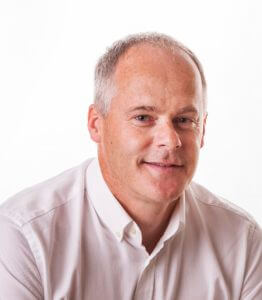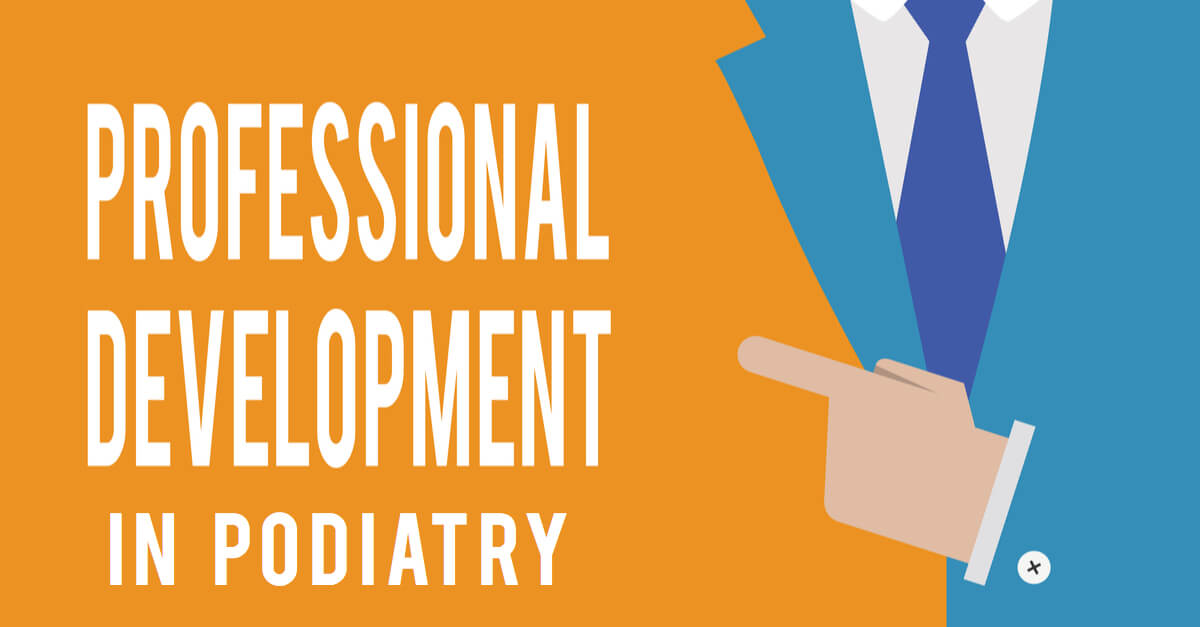Continuing Professional Development in Podiatry
Part 2: The History of Podiatry in the Making

 This article was published for Reflective Podiatric Practice in 2019. Much remains true as in the original content which reminds us of our attitudes toward continuous professional development. In these challenging times we all have to trawl in a slightly different way and webinars are becoming ever popular. The original article is available to download but is not user friendly to read on smart phone and tablets.
This article was published for Reflective Podiatric Practice in 2019. Much remains true as in the original content which reminds us of our attitudes toward continuous professional development. In these challenging times we all have to trawl in a slightly different way and webinars are becoming ever popular. The original article is available to download but is not user friendly to read on smart phone and tablets.
The author is well known to podiatry audiences in the UK and a clinician spotlight was published on this erudite podiatrist who has a keen interest in dermatology. (Editor)
A short History
 Continuing professional development (CPD) has become a part of everyday practice for healthcare practitioners. It has been defined as “the process by which health professionals keep updated to meet the needs of patients, the health service, and their own professional development. It includes the continuous acquisition of new knowledge, skills, and attitudes to enable competent practice” (1). As podiatrists, like many healthcare professionals, it is hard to believe that there was a once a time when graduation was the last day you were required to acquire any new professional knowledge but thankfully for our patients, and the profession, this is in the past as this article explains.
Continuing professional development (CPD) has become a part of everyday practice for healthcare practitioners. It has been defined as “the process by which health professionals keep updated to meet the needs of patients, the health service, and their own professional development. It includes the continuous acquisition of new knowledge, skills, and attitudes to enable competent practice” (1). As podiatrists, like many healthcare professionals, it is hard to believe that there was a once a time when graduation was the last day you were required to acquire any new professional knowledge but thankfully for our patients, and the profession, this is in the past as this article explains.
How far have we come?
The roots of the CPD in our profession could be traced back as early as the 1950’s in the UK chiropodial literature. Trill (2) discussed the idea of continuously maintaining one’s knowledge base, describing it as a “noble pursuit” but ultimately a process which “could improve patient care” and “uplift and increase the status of the profession”, whilst at the same time developing a more “lucrative practice”. Others around that time, called for contemporary research and knowledge to be catalogued and made available to members to a similar aim (3, 4). The need for chiropodists and podiatrists to keep up to date was re-invigorated within the mainstream professional literature in the 1970’s (5).
“a national survey of 300 chiropodists and podiatrists suggested that CPD should be more rigidly enforced”
Special interest groups and branches within the Society of Chiropodists & Podiatrists (SCP) were seen as the main driving forces in encouraging members to engage in professional development (6) but at that time, it was not a mandatory requirement just a useful add-on to one’s practice.
In the 1980’s, the topic was discussed further in the podiatry literature. Tavener outlined the problem of “professional obsolescence”, calling the need for professional education to prevent practitioners “falling behind” as practice advanced (7). This was echoed in paper by Dunlop (8) who looked at the behaviour new graduates discovering only 11% had sought any form of CPD since registration.
Latterly, in 1998, a national survey of 300 chiropodists and podiatrists suggested that CPD should be more rigidly enforced. Although the Council for the Professions Supplementary to medicine (CPSM) had no powers under the 1960 Act, it was suggested that the professional body should take more responsibility for ensuring its members undertook this activity (9), this view was shared by delegates at the Society’s Annual Conference in Dublin (1999) (10).
National surveys of members also concurred strong support for CPD initiative (9, 11, 12) although considerable dissent was noted in the correspondence pages of the professional journals when the issue of mandatory enforcement was suggested through the podiatry press (13). Practitioners at that time voiced negative opinions to the idea of mandatory CPD stating that time away from practice was costly and offered little in the way of useful knowledge to enhance their businesses (14, 15). This was counter balanced with opposing views, fully supporting CPD at this time (16, 17). As Borthwick and Vernon reported much discussion was seen on the letter’s pages of podiatry journals at this time with over 20 letters on this topic being published (18)
The Government took an interest
CPD increasingly came into focus as part of the Governments NHS modernisation agenda which strived to improve the quality of care in the NHS through the introduction of clinical governance and increased professional regulation (19-22). This new Government policy was aligned with the report from the Bristol Inquiry (23) which amongst its recommendations stated that “CPD, being fundamental to the quality of care provided to patients, should be compulsory for all healthcare professionals”.
In response to the Governments agenda, a framework for continuing education was launched by the then Society of Chiropodists and Podiatrists (SCP) in early 2001, with a programme of core and general CPD courses (24, 25). The CPD system required members to engage in a minimum of 30 hours of CPD activity per annum with activities such as:
- ATTENDING PODIATRY RELATED CONFERENCES & BRANCH MEETINGS
- FURTHER STUDY IN HIGHER EDUCATION
- READING THE PROFESSIONAL JOURNAL
- PUBLICATIONS OF CASE STUDIES
- COMMITTEE WORK
The launch of the SCP programme was ultimately to pre-empt the establishment of the CPD requirements of the then Health Professions Council (HPC) in 2005 (26). Although the previous regulatory body, The Council for the Professions Supplementary to Medicine had no legislative powers to enforce mandatory CPD, the HPC did and brought in a legal requirement for registrants of its professions to undertake CPD activities beginning on July 1st 2006 (27, 28). Its definition of what constituted CPD activity was much wider than that given by the SCP at the time and its structure was considerably different.
The HPC & CPD Requirements
After the formation of the new Health Professions Council, a project working with 13 of the Allied Health Professions to develop and verify methods of competence of registrants through CPD processes was established.
This was submitted to the Privy Council and approved in 2005 (29). Essentially, this was to be the basic format of what exists today in terms of the HCPC’s CPD requirements. Cole (30) conducted a qualitative study of podiatrist’s perceptions at the time it was introduced in 2006 and uncovered how there was a sense of concern but inevitability with its introduction. Despite ambivalence from some practitioners, it was generally accepted by podiatrists as a necessary step. Podiatrists were the first group selected within the HPC to commence collating a record of their CPD.
From July 2006, the Health Care Professions Council required podiatrists to maintain a portfolio of all CPD activities for a two-year period (July 2006-2008). They were closely followed by Operating Department Practitioners later in 2006. At the end of the two-year period, following biannual re-registration, in July 2008, 5% of the podiatrists on the HCP register were selected for portfolio assessment. Once selected, the podiatrist was mandated by the HPC to provide a written profile of CPD activity demonstrating contiguity with the approved standards within 28 days. HPC assessors judged the CPD profiles against strict assessment criteria and to the extent that the standards were met. Following the introductory stages, in the subsequent audit cycles, this was reduced to 2.5% of each professional group.
So what is CPD, according the HCPC?
Curiously, the definition of CPD given by the regulatory HCPC, was in some ways far broader than that considered by the SCP earlier. The HPC defined it as the way in which you continue to learn and develop throughout your career so you keep your skills and knowledge up to date and are able to practise safely and effectively but the definition was not just about formal study and stressed CPD is not only formal courses but any activity from which you learn and develop (29). Examples of this in the latest HCPC document on CPD include (31):
WORK-BASED LEARNING.
for example, reflecting on experiences at work, considering feedback from service users or being a member of a committee
PROFESSIONAL ACTIVITY
for example, being involved in a professional body or giving a presentation at a conference
FORMAL EDUCATION.
for example, going on formal courses or carrying out research
SELF-DIRECTED LEARNING.
for example, reading articles and books
Under this system, registrants are required to maintain a record of all our CPD activities for the two-year period and it selected for audit we can use this to form the basis of the submission to the HCPC. The HCPC provides a useful document outlining the whole process which can be found online at www.hpcpc-uk.org along with example portfolio submissions.
![]()
- Peck C, McCall M, McLaren B, Rotem T. Continuing medical education and continuing professional development: international comparisons. Br Med J (Clin Res Ed). 2000;320(7232):432-5.
- Trill H. Research in chiropody. The Chiropodist. 1951;6(4):132-5.
- Keegan T. An aspect on research. The Chiropodist. 1946:249-51.
- Neale D. Truths, half-truths, or myths? The Chiropodist. 1964;19(4):73-6.
- Miles S. Continuing Professional Education. The Chiropodist. 1972;27(7):257-8.
- Editorial. Continuing Professional Development. The Chiropodist. 1979;34(5):129-31.
- Tavener G. Obsolesce in the professions and the need for professional life planning: a view from chiropody. The Chiropodist. 1986;41(11):426-30.
- Dunlop G. The effectiveness of a three year chiropody course in preparing for professional life. British Journal of Podiatric Medicine. 1989;44(9):194-201.
- Pavey M. Continuing professional development in the podiatry profession. Br J Pod. 1998;1(3):91-7.
- Potter MJ. Making progress with CPD and beyond (Editorial). Br J Pod. 2002;5(1):3.
- Bristow I. The attitudes and opinions of state registered podiatrists towards evidence based practice and the clinical effectiveness initiative. [MSc]. Oxford: University of Oxford; 2001.
- McCormick KG. Continuing Professional Development: National Podiatry Survey. Edinburgh: Queen Margaret University College; 2002.
- Editorial. CPD – The way ahead. Podiatry Now. 2000;3(2):50.
- Powell J. Letter to the editor. Search. 1990(90):8.
- Arnold L. Letter to the editor. Search. 1990(90):9.
- Tollafield DR. Letter to the editor. Search. 1997(92):5.
- Hargrave J. Letter to the Editor. Search. 1997(92):5.
- Borthwick AM, Vernon W. Continuing professional development in podiatry: A needs analysis study. Br J Pod. 2002;5(3):73-81.
- Department of Health. The new NHS: Modern and dependable. London: HMSO, 1997.
- Department of Health. A first class service – quality in the new NHS. London: HMSO, 1998.
- Department of Health. The NHS Plan: a plan for investment, a plan for reform. London: HMSO; 2000.
- Department of Health. Meeting the Challenge: A Strategy for the Allied Health Professions. London: DoH; 2001.
- Kennedy I. Learning from Bristol: The report of the Public Inquiry into children’s heart surgery at the Bristol Royal Infirmary 1984-1995, CM5207(1). 2001.
- Sabine P. Continuing Professional Development: Your responsibilities and the Society of Chiropodists & Podiatrists Requirements. In: Open Letter to Members, editor. London2001.
- Potter M. Making progress with CPD and beyond (editorial). Br J Pod. 2002;5(1):3.
- Bristow I. A tribute to Mike Potter, former Dean, Faculty of Podiatric Medicine and General Practice. Podiatry Now. 2010;13(1):22.
- Health Professions Council. Standards of continuing professional development London: HPC; 2005 [12th July 2011]. Available from: http://www.hpc-uk.org/aboutregistration/standards/cpd/.
- Editorial. HPC introduces CPD requirements for podiatrists from July 2006. Podiatry Now. 2006;9(7):6.
- Health Professions Council. Your guide to our standards for continuing professional development. London 2006.
- Cole M. The views, experiences and perceptions of podiatric practitioners to continuing professional development (CPD) and the requirement for re-registration.: University of Southampton; 2009.
- Health and Care Professions Council. Continuing professional development and your registration. London 2017.
Thanks for reading “Continuous Professional Development in Podiatry” by Dr Ivan Bristow
Originally written for Reflective Podiatric Practice in September 2019 & Published by Busypencilcase Reflective Communications Est. 2015

Updated 20 February 2021
Why not sign-up today and stay in touch with regular free newsfeeds covering articles for podiatrists from ConsultingFootPain



Recent Comments